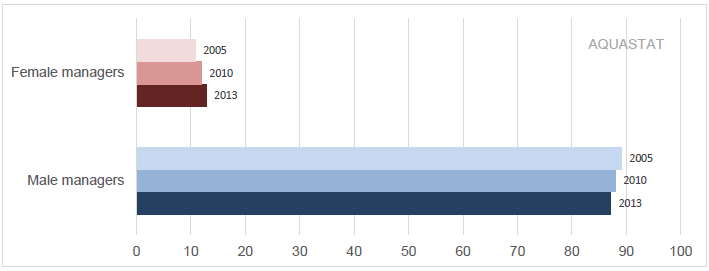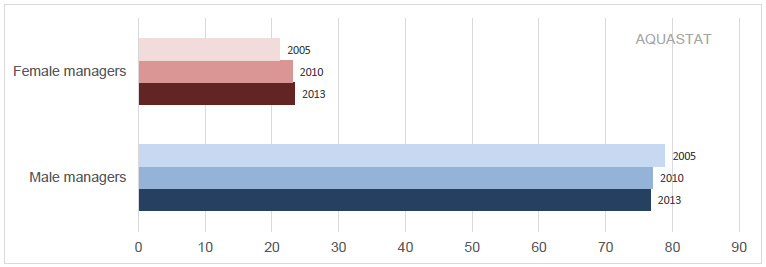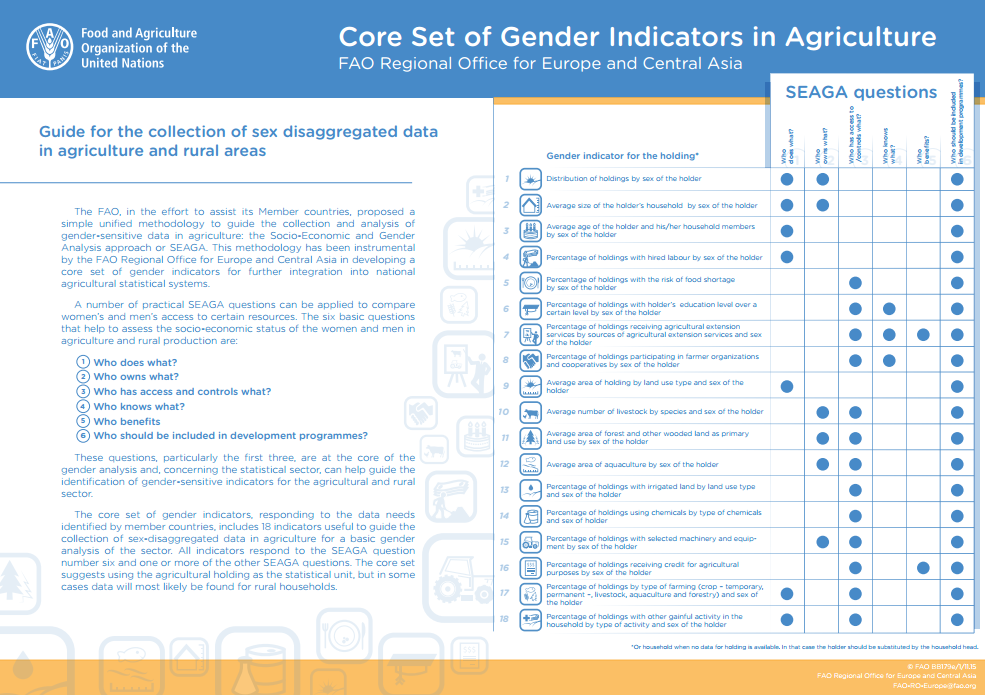AQUASTAT - FAO's Information System on Water and Agriculture
National data
In order to initiate the inclusion of sex- and age-disaggregated indicators in AQUASTAT and to extend our understanding on gender dynamics in agricultural water management and more specifically irrigation, AQUASTAT has received customized data from Eurostat with the assistance of the FAO Statistics Division. The data, referring to different years and different European countries and obtained through agricultural censuses, will allow an elaborate and comparative analysis of gender differences relative to irrigation.
The objective of this initiative is to kick-start the enrichment of the Main Database with gender-disaggregated variables and intends to add as much data as possible over time, including more countries.
This page contains the results of the evaluation of national-level data obtained from Eurostat for the creation of the two gender sensitive indicators below which have been included in the Main Database under the category "Irrigation and drainage development". Clicking on the name of the variable shows the data so far available in the database:
- Percentage of area equipped for irrigation managed by women
- Percentage of agricultural holdings with irrigation managed by women
The figures below summarize the data of the above variables for women and men in the European Union.
Click on the figure below to obtain the underlying data by country, definitions and calculation rules
Evolution of the percentage of agricultural holdings with irrigation managed by women and men in the European Union
Click on the figure below to obtain the underlying data by country, definitions and calculation rules
Evolution of the percentage of agricultural holdings with irrigation managed by women and men in the European Union
Since not every indicator can be included in the Main Database, additional gender-sensitive indicators and their analyses are included below, also based on the anaylsis of the data obtained from Eurostat.
As far as the age structure of the managers of agricultural holdings with irrigation are concerned, there is not much difference between men and women and not much difference between 2005, 2010 and 2013. Around one third of the managers is older than 65 years, while just 5 percent is younger than 35 years.
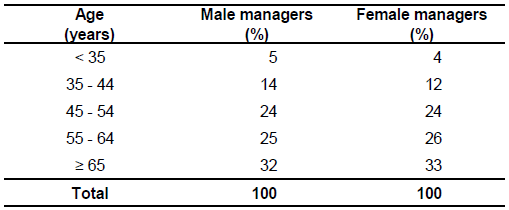
As far as size of the holdings is concerned, women manage smaller agricultural holdings and holdings equipped for irrigation. From year 2005 to 2013, there has been a slight increase in the share of women who manage small agricultural holdings, which means women manage less and less large holdings.
Percentage of holdings equipped for irrigation by their size classes managed by men and women in the European Union in 2013
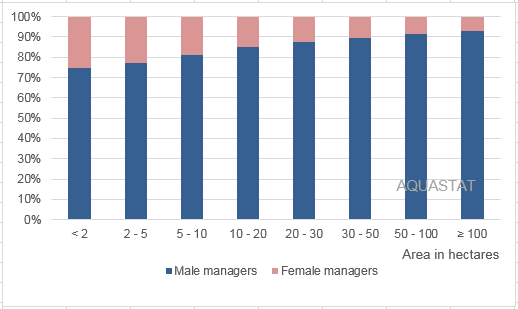
The main objective of these indicators is to identify the manager of the agricultural holding by sex and age. According to the WCA 2020, this would provide the basis for comparing the characteristics of holdings operated by men and women. In addition to the sex of the manager, the age is useful to examine gender issues as well. For example, is there a certain age category where women are more represented?
Yet, the WCA 2020 also points out that it is not realistic to assume that the agricultural holder or manager is the only or major decision-maker for the holding. Often, these decision-making processes are more complex and many household members engage in taking responsibilities for managing different aspects of the operation of the holding. Which is the reason why the WCA 2020 document proposes a complete section under Theme 10 on "Intra-household distribution of managerial decisions and ownership on the holding".
Similarly, the Passport to mainstreaming gender in water programmes also emphasizes that decision-making power on water use and management is strongly connected to land ownership, hence the importance to examine the linkages between land and water in terms of access and ownership. Which is why the Passport suggests a variety of questions that can help users to examine these complex dynamics.
However, as highlighted previously, gender disaggregated data, especially relative to agricultural water and irrigation is hardly accessible nor circulated. While AQUASTAT strongly promotes an elaborate collection and analysis of data relative to gender and water, it follows the first Minimum Standard of FAO's Policy on Gender Equality, and predominantly attempts to "mine existing data sources" to get a hold of prevailing sex- and age- disaggregated data. Although the data currently available does not draw a complete picture of the present gender dynamics in agricultural water management, the indicators displayed on this page corresponds to many of the "Core Set of Gender Indicators in Agriculture" proposed by the FAO Regional Office for Europe and Central Asia in 2016, in the scope of a guide for the collection of sex-disaggregated data in agriculture and rural areas and their integration in national agricultural statistical systems, which can be seen below.
Click on image to magnify
As it can be seen in the document above, gender indicators number 1, 3, 9 and 13 can help find answers for a number of practical questions, such as "Who does what?", "Who owns what?", "Who has access to/controls what?" and "Who should be included in development programmes?". And indicator 13 directly refers to irrigation.
Pursuing to find answers to these questions, AQUASTAT analyzed national-level data from European countries to begin with, as data from these countries are more easily accessible. It certainly wishes to add more countries to its database in time.
